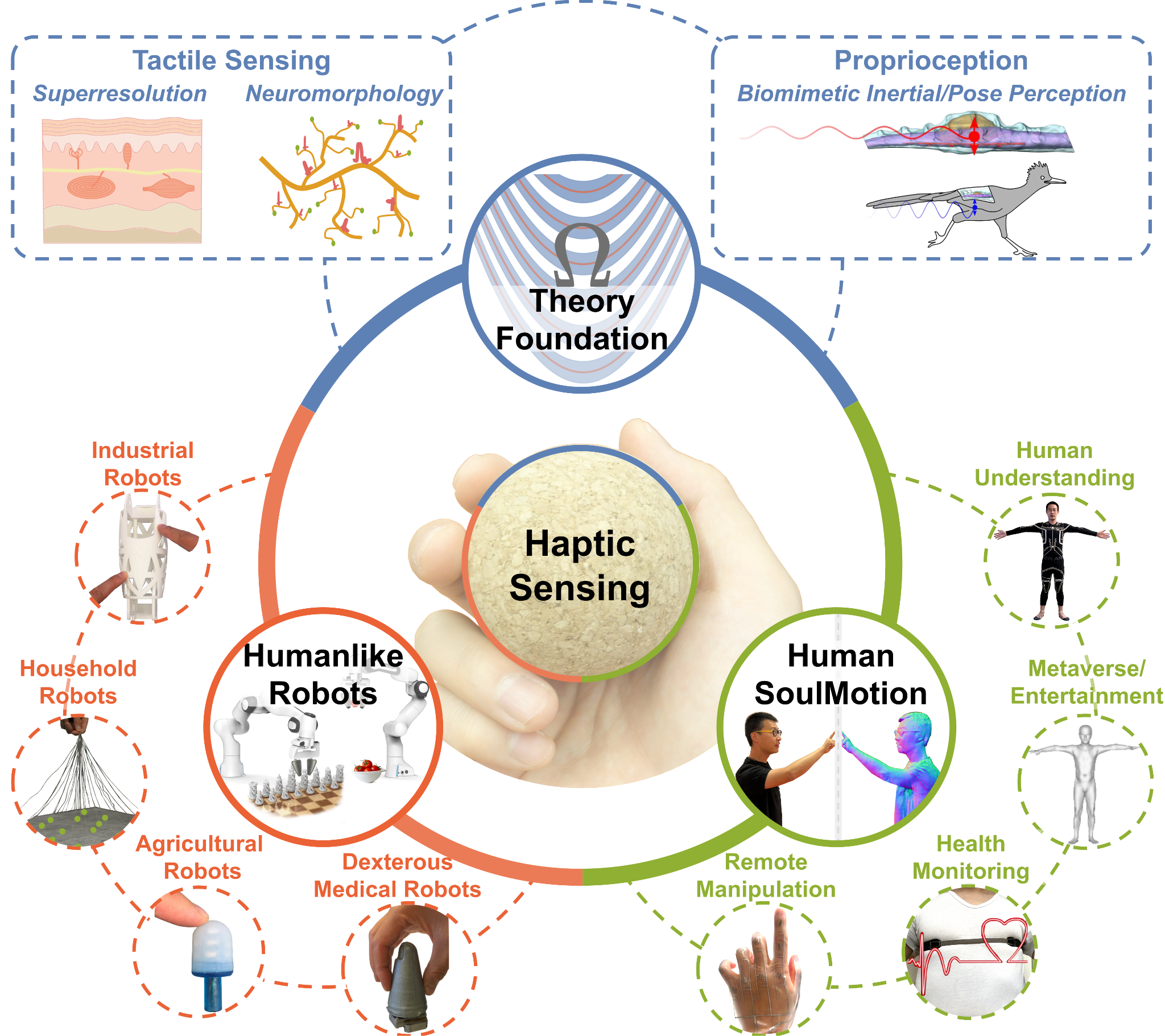Overview

Our Haptic Sensing Lab research interests lie in understanding sensing mechanisms in creatures (theory) and creating advanced haptic sensing techniques to give robots a better sense of touch (haptic sensors), and to give humans a better user experience (wearables).
Detailed Directions
Fundamental Science: Theory in Haptic Superresolution
Thousands of mechanoreceptors under human skin, varying in depth and morphology, are densely packed with up to 200 per cm². How do they detect contacts just ~20 nanometers apart?
Fundamental Science: Theory in Haptic Sensing Network
Matter, whether soft or rigid, typically comes in continuous forms that encode physical information alongside discrete measurements. How does this continuity in the physical network contribute to information gain in sensing?
Nature-inspired: Neuromorphic Sensing
Creatures are power-efficient, environmentally resilient, diverse, and consistently defy the von Neumann architecture. How are haptic signals locally induced, merged/encoded in the transmission path, and decoded along the nerve system in the brain?
Nature-inspired: Biological Sensing Organs
Biological organs exhibit diverse morphologies tailored for specific tasks. Understanding their mechanisms, reverse-engineering them for investigation, and applying these findings in real-world applications are intriguing and rewarding.
Applications in Robotics: Haptic Sensors and Dexterous Manipulation
Robots with embodied intelligence take various forms, integrating into human daily life. How can they perceive, exploit, and explore their bodies to achieve artificial general intelligence? Perhaps starting with self-awareness of their bodies could be an option.
Applications in Humans: Wearables and Large Motion Model
Humans take their body agility for granted, with numerous locomotion patterns and diverse behaviors. How could these be recorded, analyzed, and influenced (either encouraged or discouraged)?
Science+Nature Exploration: Emerging Behaviors of Multi-agent Soft Robots
Existing creatures are predominantly soft or hybrid, with few exceptions for fully rigid forms. Why is body softness so important?
Science+Nature Exploration: Live-cell Robots
There exists an inherent gap between current robotic platforms and biological paradigms. What can we learn from embodied live cells? How can we train them to possess special functionalities?
Science+Nature Exploration: Generative AI Powered by Analog Signals
A huge energy burn in training digital generative AI models threatens our academic, industrial, and living climate. Is the transitioning time from digital to analog paradigm coming?
